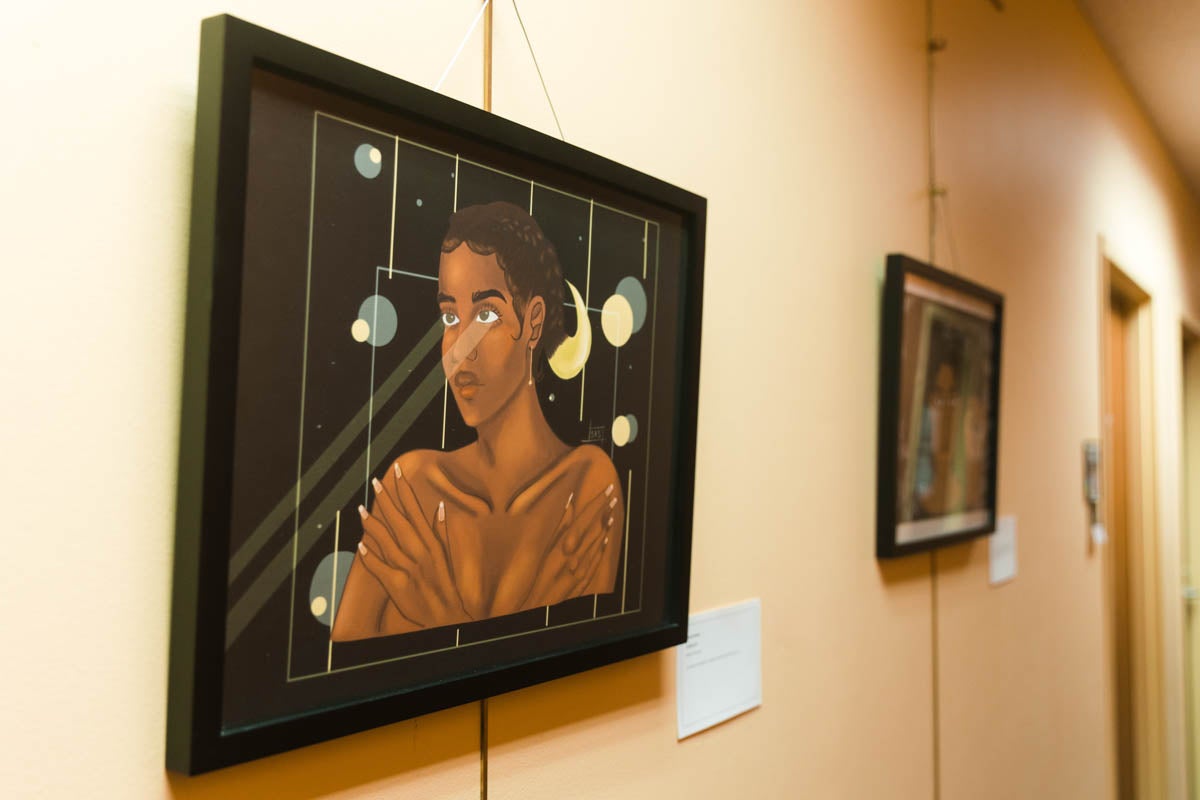UCF’s seventh annual Healing Art Exhibition, curated by Counseling and Psychological Services in partnership with the School of Visual Arts and Design, will be held virtually on Wednesday, Feb. 10 at 6 p.m. via Zoom. The exhibition will feature a virtual art gallery and awards ceremony celebrating the 2D artwork created by students, alumni, faculty and staff showcasing the connection between art and healing .
“Art provides an outlet for coping, a connection to others with its beauty or intensity and — literally and figuratively — a canvas to celebrate one’s dignity and voice,” says Leanne Schumann, student counseling specialist. “Throughout painful times, art remains after the very last voice has faded or the crowds have dissipated. Art speaks for us, soothes us, challenges us.”
Each year, the Healing Art Exhibition creates campus-wide awareness of CAPS, increases inclusivity across campus, advocates for mental health services and promotes creativity and healing. Previous years’ themes include Unity and Thriving: Ongoing Evolution and Growth.
This year’s theme, The Art of Being Visible: Expressions of Social Justice, comes at a key time in social justice visibility. The exhibition will explore the artists’ experiences and interpretations of social justice and what it means to be visible. Selected artwork will be on display at CAPS through November 2021 for those with appointments. The virtual reception and awards will be archived on SVAD’s YouTube account after the event.
“CAPS recognized that the community at large was experiencing tremendous pain. We were aware of a tidal wave of social injustice, isolation, fear and uncertainty. We felt that our seventh Healing Art Exhibition should address this,” says Schumann.
Katya Marcia, clinical psychology student and contributing artist, was particularly moved by this theme.
“The theme of this year’s exhibition inspired me in so many ways and was timed perfectly with the prevalence of racial injustice and violence in this country,” she says. Her work focuses on empowering African and Latina women to feel beautiful and important.
Creative expression has been shown to have a powerful impact on the health and wellbeing of participants and audiences. Engagement in the arts can increase positive emotion and decrease depressive symptoms and stress responses.
“I’ve always felt that art was a universal language and a tool to communicate our deepest feelings and thoughts and have others understand it,” says Eli Dreyfuss, photography student and contributing artist. “As an introverted person, I often find myself struggling to find the words to describe how I’m feeling, but engaging in an artistic process has always been my way of expressing what words sometimes can’t.” His artwork documents the beauty of the human condition and helps people find hope in seemingly hopeless times.
Similarly, Stecia Steele, biotechnology student and contributing artist, views art as “a good way to pour out one’s frustrations if they don’t have words to explain how they feel.” Her piece, “Golden Girl,” highlights how she typically uses art as a tool for healing.





